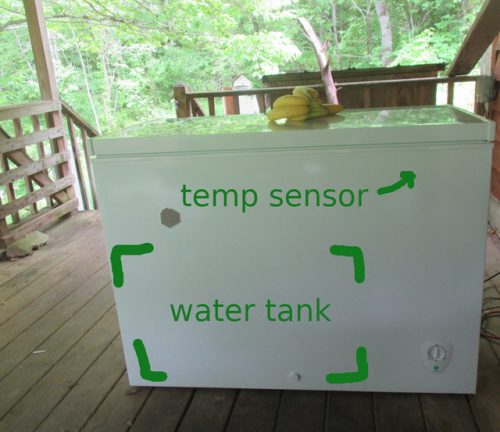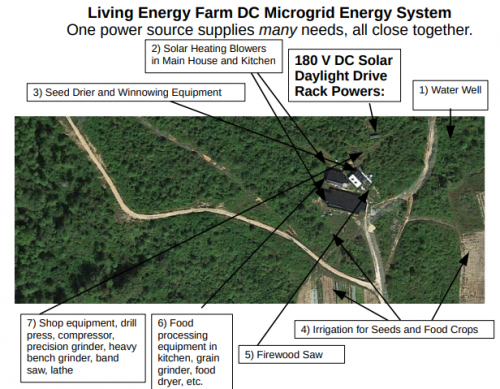When you pick your tomatoes, if you want to keep them longer, you have to find a way of reducing the temperature. As availability of electricity at village level can be a problem, ways have to be found to lower the temperature of this fragile crop. Some farmers at Dambatta in Kano State, Nigeria have used local mud bricks to make a very effective cooling chamber. Watch the video at AccessAgriculture. Via Practical Action.
Tech Talks
Last week, I spoke at The Conference in Malmö, Sweden, where I saw quite some interesting tech talks. The super-efficient Swedes have already uploaded them, so I present you some of my favorites:
- Meghan O’Gieblyn – God in the machine [48:12]
- Brett Scott – The war on cash [14:41]
- Nicole He – Say my name, say my name [15:15]
- Darius Kazemi – Social solutions to social networking [16:20]
Next week, I’m doing a talk in Paris. Knowing the French a bit, these videos will never be uploaded, so be there.
Off-Grid, Solar-Powered, Zero-Battery Refrigerator
Joey Hess has designed, built and tested an off-grid, solar powered fridge, with no battery bank. Using an inexpensive chest freezer with a few modifications, the fridge retains cold overnight and through rainy periods. The set-up consists of a standard chest freezer, an added thermal mass, an inverter, and computer control. He writes: [Read more…]
Foaming of Recyclable Clays into Low-Cost Thermal Insulators
“Thermal insulators are crucial to reduce the high energy demands and greenhouse emissions in the construction sector. However, the fabrication of insulating materials that are cost-effective, fire resistant, and environmental-friendly remains a major challenge. In this work, we present a room-temperature processing route to fabricate porous insulators using foams made from recyclable clays that can be locally resourced at very low costs.”
Read more: Minas, Clara, et al. “Foaming of Recyclable Clays into Energy-Efficient Low-Cost Thermal Insulators.” ACS Sustainable Chemistry & Engineering (2019).
Amish Hand-Demolish Building in Tennessee
Who to call when you need your building “hand-demolished”? To the general public, “Amish” often equates to handcrafted – meaning hand-milked cows, handmade quilts, hand-built furniture, and the like (whether that perception is always accurate is another question).
And in that spirit, one Tennessee city found that an Amish hands-on approach was exactly what they needed to remove a historic structure. The Clarksville Leaf-Chronicle reports that an Amish crew of workers has been deconstructing the city’s 140-year-old Hodgson/Dabbs building, brick-by-brick.
Read more: Amish Hand-Demolish Building in Tennessee, Amish America, June 27, 2019. Image by Henry Taylor for the Leaf Chronicle.
“Daylight Drive” DC Solar Power at the Living Energy Farm
Reader Goran Christiansson sends us a link to Living Energy Farm, a research and community project in Virginia, USA. Most notable is their use of “Daylight Drive” DC solar power without batteries for workshop tools — reminiscent of the ideas outlined in How to run the economy on the weather. Also of note is their choice for less efficient but more durable Nickel Iron batteries for lighting. [Read more…]










